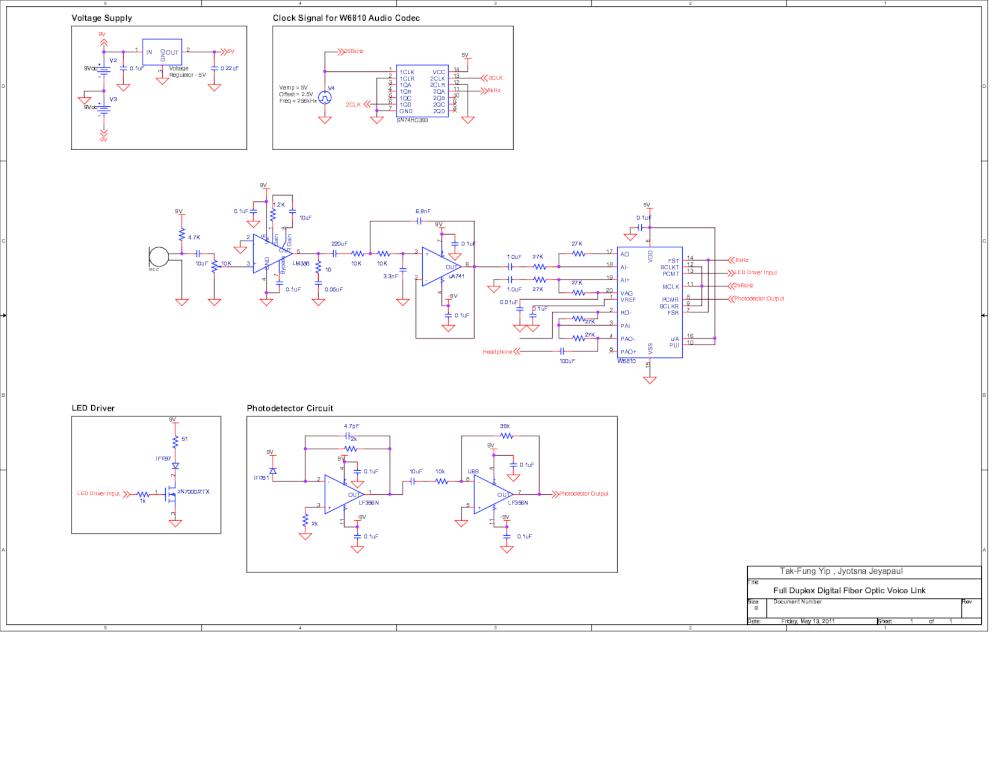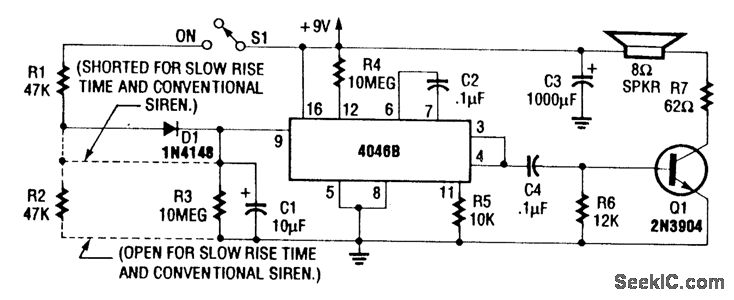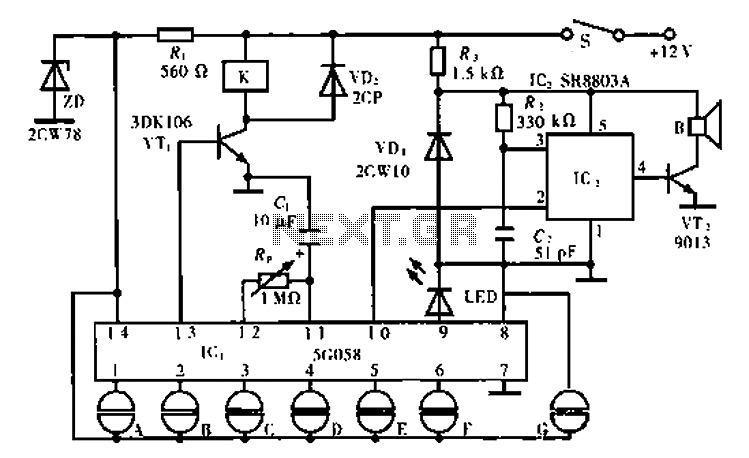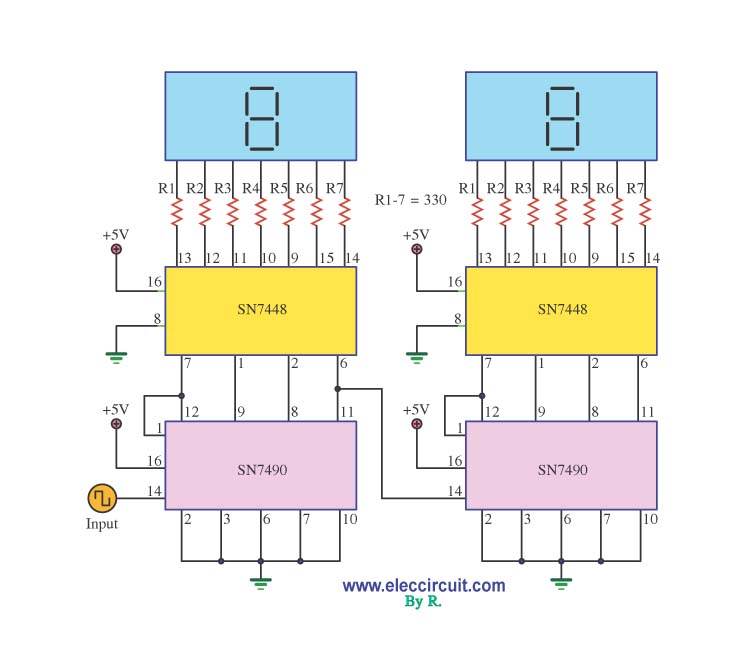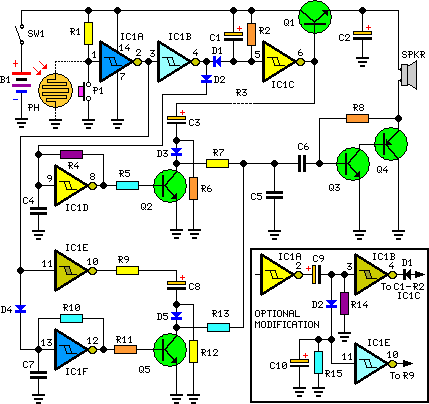
Digital Electronic Lock
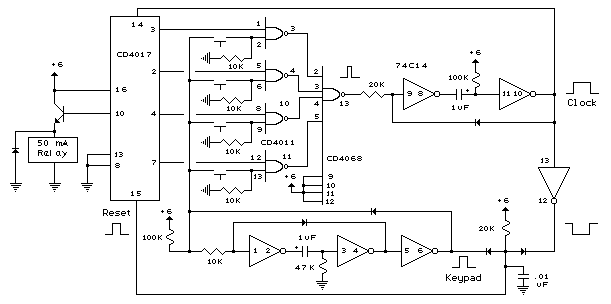
The digital lock shown below uses 4 common logic ICs to allow controlling a relay by entering a 4 digit number on a keypad. The first 4 outputs from the CD4017 decade counter (pins 3,2,4,7) are gated together with 4 digits from a keypad so that as the keys are depressed in the correct order, the counter will advance. As each correct key is pressed, a low level appears at the output of the dual NAND gate producing a high level at the output of the 8 input NAND at pin 13. The momentary high level from pin 13 activates a one shot circuit which applies an approximate 80 m
The digital lock circuit utilizes a combination of a keypad and a CD4017 decade counter to implement a secure access control system. The keypad consists of a matrix of keys, each corresponding to a specific digit. When a key is pressed, it sends a signal to the inputs of the CD4017, which serves as a counter that advances with each correct input. The CD4017 has ten outputs, but only the first four (pins 3, 2, 4, and 7) are utilized in this application to correspond to the four-digit password.
The logic is further controlled by a dual NAND gate, which is responsible for detecting the correct sequence of key presses. Each correct key press produces a low signal at the output of the NAND gate, which is then fed into an 8-input NAND gate. The output of this gate, located at pin 13, transitions to a high state when the correct sequence of inputs is received. This high signal is momentary and is used to trigger a one-shot circuit.
The one-shot circuit is designed to generate a short pulse, which can be used to activate a relay or another output device. In this case, the one-shot circuit is configured to produce a pulse of approximately 80 milliseconds, sufficient to engage a relay that can control a lock mechanism or other electronic devices. This setup ensures that only the correct sequence of key presses will activate the relay, providing a reliable means of access control.
Overall, this digital lock circuit exemplifies a straightforward yet effective method of securing access through electronic means, leveraging common logic ICs to achieve the desired functionality.The digital lock shown below uses 4 common logic ICs to allow controlling a relay by entering a 4 digit number on a keypad. The first 4 outputs from the CD4017 decade counter (pins 3,2,4,7) are gated together with 4 digits from a keypad so that as the keys are depressed in the correct order, the counter will advance.
As each correct key is pressed, a low level appears at the output of the dual NAND gate producing a high level at the output of the 8 input NAND at pin 13. The momentary high level from pin 13 activates a one shot circuit which applies an approximate 80 m 🔗 External reference
The digital lock circuit utilizes a combination of a keypad and a CD4017 decade counter to implement a secure access control system. The keypad consists of a matrix of keys, each corresponding to a specific digit. When a key is pressed, it sends a signal to the inputs of the CD4017, which serves as a counter that advances with each correct input. The CD4017 has ten outputs, but only the first four (pins 3, 2, 4, and 7) are utilized in this application to correspond to the four-digit password.
The logic is further controlled by a dual NAND gate, which is responsible for detecting the correct sequence of key presses. Each correct key press produces a low signal at the output of the NAND gate, which is then fed into an 8-input NAND gate. The output of this gate, located at pin 13, transitions to a high state when the correct sequence of inputs is received. This high signal is momentary and is used to trigger a one-shot circuit.
The one-shot circuit is designed to generate a short pulse, which can be used to activate a relay or another output device. In this case, the one-shot circuit is configured to produce a pulse of approximately 80 milliseconds, sufficient to engage a relay that can control a lock mechanism or other electronic devices. This setup ensures that only the correct sequence of key presses will activate the relay, providing a reliable means of access control.
Overall, this digital lock circuit exemplifies a straightforward yet effective method of securing access through electronic means, leveraging common logic ICs to achieve the desired functionality.The digital lock shown below uses 4 common logic ICs to allow controlling a relay by entering a 4 digit number on a keypad. The first 4 outputs from the CD4017 decade counter (pins 3,2,4,7) are gated together with 4 digits from a keypad so that as the keys are depressed in the correct order, the counter will advance.
As each correct key is pressed, a low level appears at the output of the dual NAND gate producing a high level at the output of the 8 input NAND at pin 13. The momentary high level from pin 13 activates a one shot circuit which applies an approximate 80 m 🔗 External reference
